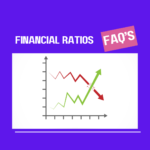What is the difference between ADRs, GDRs, and regular equity shares?
| Feature | ADRs (American Depositary Receipts) | GDRs (Global Depositary Receipts) | Regular Equity Shares |
|---|---|---|---|
| Market | U.S. stock exchanges (NYSE, NASDAQ) | Global exchanges (London, Luxembourg, Singapore) | Domestic stock exchanges (e.g., NSE, BSE in India) |
| Currency | USD | USD, EUR, GBP | Local currency (e.g., INR for Indian stocks) |
| Investors | U.S. investors | Global investors | Domestic and foreign investors |
| Issued By | U.S. depositary banks | International depositary banks | Directly by the company |
| Regulatory Authority | U.S. SEC (Securities and Exchange Commission) | Varies by country (UK FCA, EU regulators) | Domestic market regulators (e.g., SEBI in India) |
| Dividends & Returns | Paid in USD | Paid in USD, EUR, or GBP | Paid in local currency |
| Trading Process | Traded like U.S. stocks | Traded like global stocks | Traded in home country’s exchanges |
| Conversion | Can be converted into underlying shares | Can be converted into underlying shares | Not applicable (investors directly own shares) |
How do ADRs and GDRs help companies raise capital?
ADRs (American Depositary Receipts) and GDRs (Global Depositary Receipts) allow companies to access international investors and raise capital beyond their domestic markets. Here’s how they help:
1. Access to Global Investors
- ADRs enable companies to attract U.S. investors by listing on U.S. stock exchanges.
- GDRs help companies tap into multiple international markets (e.g., London, Luxembourg).
- This increases investor base and demand for the company’s shares.
2. Raising Capital Without Domestic Constraints
- Companies may face liquidity or valuation limitations in their home stock market.
- By issuing ADRs/GDRs, they bypass local market restrictions and attract more capital.
3. Higher Valuation & Better Liquidity
- International investors often value stocks differently, sometimes leading to higher valuations than in the domestic market.
- More liquidity improves stock price stability and reduces the cost of capital.
4. Currency Diversification
- ADRs are traded in USD, while GDRs can be in USD, EUR, or GBP.
- Raising capital in stronger currencies helps companies hedge against local currency depreciation.
5. Improved Global Reputation & Credibility
- Listing ADRs/GDRs on international exchanges enhances a company’s brand visibility.
- It signals strong financial health, attracting more foreign investments.
6. Avoiding Regulatory Barriers
- Some companies cannot directly list on foreign exchanges due to domestic regulations.
- ADRs/GDRs offer an alternative route to access global capital markets without dual listing complexity.
What are the regulatory requirements for issuing ADRs and GDRs?
1. ADRs (American Depositary Receipts) – U.S. Regulations
✅ SEC Compliance:
- Registration under the Securities Act of 1933 (except for Level I ADRs).
- Periodic financial disclosures (10-K, 10-Q) for Level II & III ADRs.
✅ Accounting Standards:
- Must follow U.S. GAAP or IFRS (with reconciliation).
✅ Depositary Bank:
- A U.S. bank (JPMorgan, BNY Mellon, Citibank) issues ADRs.
2. GDRs (Global Depositary Receipts) – International Regulations
✅ Stock Exchange Rules:
- Listed on London, Luxembourg, or Singapore exchanges.
- Compliance with local securities laws (e.g., UK FCA).
✅ Accounting & Disclosure:
- Financials must follow IFRS or U.S. GAAP.
✅ Depositary & Custodian Bank:
- Managed by international banks (Deutsche Bank, HSBC).
✅ Regulation S & Rule 144A GDRs:
- Reg S: For non-U.S. investors.
- Rule 144A: For U.S. institutional investors.
3. Indian Companies Issuing ADRs/GDRs
✅ Approval from SEBI & RBI:
- RBI monitors foreign exchange rules under FEMA.
- SEBI oversees overseas listing norms.
✅ Filing & Restrictions:
- Companies must file Form FCCB/DR with RBI.
- Funds raised must comply with RBI’s usage guidelines.
✅ Two-Way Fungibility:
- ADRs/GDRs can be converted into local shares (subject to RBI rules).
What are the key differences between Level I, Level II, and Level III ADRs?
ADRs are classified into three levels based on their listing status, SEC compliance, and capital-raising ability.
| Feature | Level I ADRs | Level II ADRs | Level III ADRs |
|---|---|---|---|
| Stock Exchange Listing | Not listed (traded OTC) | Listed on U.S. exchanges (NYSE, NASDAQ) | Listed on U.S. exchanges (NYSE, NASDAQ) |
| SEC Registration | Not required (exempt) | Required | Required |
| Capital Raising | ❌ Cannot raise capital | ❌ Cannot raise capital | ✅ Can raise capital |
| Trading Market | OTC (Over-the-Counter) Market | Major U.S. Exchanges | Major U.S. Exchanges |
| Reporting Requirements | Minimal (limited disclosure) | Full SEC filings (10-K, 10-Q) | Full SEC filings (10-K, 10-Q) + Prospectus |
| Accounting Standards | Not required to follow U.S. GAAP | Must follow U.S. GAAP or IFRS (with reconciliation) | Must follow U.S. GAAP or IFRS (with reconciliation) |
| Investor Base | Limited (mainly institutional investors) | Wider U.S. investor base | Broadest investor reach |
| Example Companies | Smaller foreign companies | Tata Motors, ICICI Bank | Infosys, HDFC Bank |
How are ADRs and GDRs listed and traded on stock exchanges?
1. Listing Process of ADRs & GDRs
✅ Step 1: Appoint a Depositary Bank & Custodian Bank
- Depositary Bank (e.g., JPMorgan, BNY Mellon) issues ADRs/GDRs and manages investor relations.
- Custodian Bank holds the actual company shares in the home country.
✅ Step 2: Regulatory Approvals
- ADRs: Companies must comply with SEC regulations (for Level II & III ADRs) in the U.S.
- GDRs: Companies follow listing rules of global exchanges (e.g., London, Luxembourg).
- Indian companies need approval from SEBI & RBI before issuing ADRs/GDRs.
✅ Step 3: Share Depositing & ADR/GDR Issuance
- The company deposits shares with the custodian bank.
- The depositary bank issues ADRs/GDRs based on these shares.
- The ADRs/GDRs are priced and listed on the respective stock exchange.
✅ Step 4: Trading Begins on the Stock Exchange
- ADRs trade on U.S. exchanges (NYSE, NASDAQ) or over-the-counter (OTC).
- GDRs trade on global exchanges (London, Luxembourg, Singapore).
2. How ADRs & GDRs Are Traded
📌 ADRs (U.S. Market Trading)
- Listed ADRs (Level II & III) trade like U.S. stocks on NYSE/NASDAQ.
- OTC-traded ADRs (Level I) have lower liquidity.
- Prices are in USD, and dividends (if any) are paid in USD.
📌 GDRs (Global Market Trading)
- Listed on London, Luxembourg, or Singapore exchanges.
- Traded in USD, EUR, or GBP.
- Institutional investors mainly trade Regulation S GDRs (non-U.S.) or Rule 144A GDRs (for U.S. institutions).
📌 Conversion & Fungibility
- ADR/GDR holders can convert them into underlying shares or vice versa.
- Some countries (like India) have two-way fungibility rules allowing conversion within regulatory limits.
What role do custodian banks and depository banks play in ADR/GDR issuance?
1. Custodian Bank (Home Country) – Holds Shares
✅ Holds the company’s actual shares in the home country.
✅ Ensures compliance with local regulations (e.g., SEBI, RBI in India).
✅ Works with the depositary bank to facilitate ADR/GDR issuance.
✅ Example: HDFC Bank, ICICI Bank, HSBC
2. Depositary Bank (Foreign Market) – Issues ADRs/GDRs
✅ Issues ADRs (U.S.) or GDRs (global) based on shares held by the custodian bank.
✅ Manages trading & liquidity on stock exchanges (NYSE, NASDAQ, LSE, etc.).
✅ Converts & distributes dividends to ADR/GDR holders.
✅ Handles investor services, including ADR/GDR conversions.
✅ Example: JPMorgan, BNY Mellon, Citibank, Deutsche Bank
How do investors benefit from investing in ADRs and GDRs?
Investor Benefits of ADRs & GDRs
ADRs (American Depositary Receipts) and GDRs (Global Depositary Receipts) provide investors with easy access to foreign companies while offering liquidity, regulatory protections, and diversification.
1. Easy Access to Foreign Companies
✅ Trade on Local Stock Exchanges – ADRs trade on NYSE/NASDAQ, while GDRs are listed on London, Luxembourg, and Singapore exchanges.
✅ No Need for Foreign Brokerage Accounts – Investors can buy ADRs/GDRs like regular stocks.
✅ Avoid Currency Exchange Hassles – ADRs trade in USD, while GDRs trade in USD, EUR, or GBP.
2. Liquidity & Regulatory Protection
✅ Higher Liquidity – ADRs/GDRs trade on major exchanges, making them easier to buy/sell than foreign stocks.
✅ Regulated by SEC & Global Authorities – Level II & III ADRs follow SEC rules, ensuring financial transparency.
✅ Less Political & Market Risk – Investors avoid direct exposure to unstable foreign markets while still benefiting from the company's performance.
3. Dividends & Capital Appreciation
✅ Dividends Paid in USD/EUR – Investors receive dividends in a stable currency, avoiding foreign exchange risks.
✅ Capital Growth – ADRs/GDRs appreciate if the company performs well, just like regular equity shares.
4. Portfolio Diversification
✅ Exposure to Emerging Markets & Global Sectors – Helps balance risks in case the domestic market underperforms.
✅ Hedge Against Currency Depreciation – ADRs/GDRs protect investors from depreciation of their home currency.
5. Flexibility & Conversion
✅ Two-Way Fungibility (Subject to Regulation) – Investors can convert ADRs/GDRs into local shares (and vice versa) for arbitrage opportunities.
How do currency fluctuations impact ADR/GDR investments?
1. Effect on Stock Price
ADRs/GDRs represent foreign stocks but trade in USD, EUR, or GBP. If the local currency of the company depreciates, the ADR/GDR price may decline because the underlying shares lose value in foreign exchange terms. Conversely, if the local currency appreciates, the ADR/GDR price may rise.
2. Dividend Impact
Dividends declared in the company’s local currency must be converted to USD/EUR before being paid to ADR/GDR investors. If the local currency weakens, investors receive lower dividends after conversion. If it strengthens, dividend payouts increase.
3. Hedging & Protection
Some companies and investors use currency hedging strategies (such as derivatives) to reduce forex risk. However, ADR/GDR investors generally have indirect exposure to currency fluctuations.
4. Emerging Market Risks
ADRs/GDRs from emerging markets are more vulnerable to currency depreciation due to inflation, interest rate changes, and economic instability, making forex risk a key factor in investment decisions.
Why do companies prefer ADR/GDR issuance over direct foreign listing?
1. Easier & Cost-Effective Market Access
ADRs/GDRs allow companies to raise capital from global investors without meeting the strict regulatory and financial disclosure requirements of a direct foreign listing. A direct listing on NYSE, NASDAQ, or LSE requires extensive compliance, higher costs, and local operational setups.
2. Reduced Regulatory & Compliance Burden
Direct foreign listings require full compliance with the listing country’s securities laws (e.g., SEC rules for U.S. listings). ADRs/GDRs have fewer compliance requirements, making it easier for companies to access international capital.
3. Higher Liquidity & Investor Reach
ADRs/GDRs trade in major currencies (USD, EUR, GBP), making them attractive to global institutional investors. They also provide liquidity without the company being physically listed on foreign exchanges.
4. No Need for Physical Presence in a Foreign Market
A direct listing often requires a local office, legal entity, and regulatory approvals, increasing costs and complexity. ADRs/GDRs allow companies to tap foreign markets without these commitments.
5. Brand Recognition & Global Expansion
ADRs/GDRs enhance a company's visibility in global markets, attracting international investors and potential business partners without the legal complexities of a direct listing.
6. Flexible Fundraising & Conversion
Companies can issue ADRs/GDRs in different tranches based on market demand. Investors can convert ADRs/GDRs into local shares (subject to regulatory limits), making them an efficient fundraising tool.
Can ADR and GDR holders convert their receipts into underlying shares?
Yes, ADR (American Depositary Receipt) and GDR (Global Depositary Receipt) holders can convert their receipts into the underlying shares, subject to regulatory conditions and market availability.
1. Two-Way Fungibility
Some ADRs/GDRs are "two-way fungible," meaning investors can:
✅ Convert ADRs/GDRs into local shares – Holders can request their depositary bank to cancel the receipts and receive equivalent local shares.
✅ Convert local shares into ADRs/GDRs – Domestic shareholders may deposit their shares with a custodian bank and receive ADRs/GDRs.
2. Conversion Process
- The investor submits a conversion request to the depositary bank.
- The depositary bank cancels the ADRs/GDRs and instructs the custodian bank to release the underlying shares.
- The investor receives local shares, which can be traded on the home stock exchange.
3. Regulatory & Market Restrictions
- Some countries, like India, have restrictions on converting local shares into ADRs/GDRs.
- Conversion may be subject to forex regulations, taxation, and market liquidity.
- Some ADRs (especially Level I ADRs) have limited convertibility due to regulatory requirements.
4. Arbitrage Opportunity
- If ADR/GDR prices differ significantly from the local stock price, investors may convert and trade for profit.
- Conversion fees and taxes may apply, reducing arbitrage benefits.



